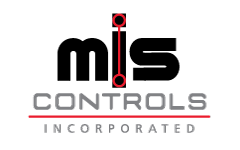Control Panel Design FAQs
Control panels are essential components in various industries, enabling users to monitor and manage a wide array of systems and processes efficiently. However, for those new to the field or even seasoned professionals, navigating control panels can sometimes be daunting. In this blog post, we’ll address some of the frequently asked questions regarding control panels, drawing insights from the expertise of MIS Controls.
1. What is a control panel, and what is its purpose?
A control panel is a centralized interface that allows users to monitor, control, and manage various devices or systems within a single location. Its purpose is to streamline operations, improve efficiency, and enhance safety by providing users with a convenient way to interact with complex systems.
2. What are the common components of a control panel?
Control panels typically consist of several key components, including:
- Control switches or buttons
- Indicator lights or displays
- Input/output terminals
- Circuit breakers or fuses
- Power supplies
- Microprocessors or programmable logic controllers (PLCs) These components work together to facilitate user interaction and system control.
3. What industries commonly use control panels?
Control panels find applications across a wide range of industries, including manufacturing, energy, utilities, transportation, building automation, and military. They are used to control processes such as production lines, HVAC systems, water treatment plants, and more.
4. How do I troubleshoot common issues with control panels?
When encountering issues with a control panel, there are several troubleshooting steps you can take, including:
- Checking power sources and connections
- Inspecting for loose or damaged wires
- Verifying settings and configurations
- Testing individual components for functionality
- Consulting user manuals or technical documentation If the issue persists, it may be necessary to seek assistance from a qualified technician or manufacturer support.
5. What are some best practices for maintaining control panels?
To ensure optimal performance and longevity, it’s essential to adhere to proper maintenance practices for control panels, such as:
- Regular inspection for signs of wear or damage
- Cleaning components and removing dust or debris
- Testing backup power sources and emergency shutdown procedures
- Keeping documentation updated and accessible By implementing these best practices, users can minimize the risk of downtime and maximize the lifespan of their control panels.
Conclusion: Control panels play a crucial role in modern industrial and commercial settings, providing users with centralized control and monitoring capabilities. By understanding their functionality, common features, and troubleshooting tips, users can effectively harness the power of control panels to optimize operations and enhance productivity. Whether you’re a novice or a seasoned professional, having a solid grasp of control panel fundamentals is essential for success in today’s interconnected world.
